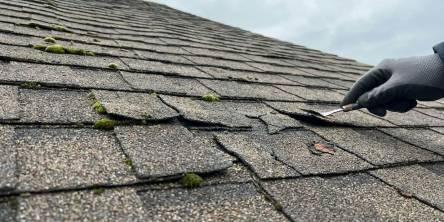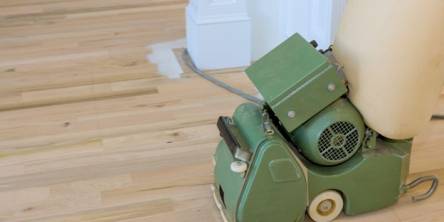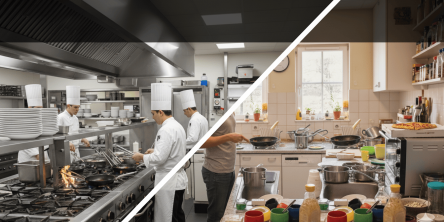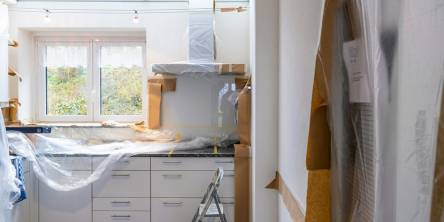How to Maintain Your Yard Drainage System for Long-Lasting Results

A well-maintained yard drainage system is key to preserving the beauty and health of any property. Poor drainage can lead to standing water, soil erosion, and even foundational damage to structures over time. However, with a little attention and the right maintenance practices, homeowners can keep their drainage systems running smoothly and avoid costly repairs. This guide explores practical, easy-to-follow steps to ensure a yard drainage system stays effective and long-lasting.
Why Is Yard Drainage Maintenance Essential?
A reliable drainage system channels excess water away from your yard and home, making a professional drainage service essential for optimal performance. When functioning correctly, it prevents water from accumulating around your foundation, flooding low-lying areas, and eroding your landscaping. If left unchecked, these issues can lead to serious and often costly problems.
Ways to Maintain Proper Drainage
Proper drainage is essential for protecting your property, preventing water damage, and ensuring the longevity of your landscape. By implementing effective drainage solutions, you can reduce the risk of flooding, soil erosion, and structural issues.
1. Inspect for Clogs and Obstructions Regularly
Over time, yard drains can easily become clogged with debris like leaves, dirt, or mulch. Regularly checking for clogs, especially after heavy rains or in the fall when trees shed leaves, is crucial. Blocked drains prevent water from flowing smoothly, causing it to back up or pool in unwanted areas.
To inspect your drains, look into each inlet to see if there’s any visible buildup. Clear away debris by hand or with a garden hose. For more stubborn clogs, a plumber’s snake or pressure washer may help clear deeper obstructions. Regular inspections can help prevent more significant issues down the road.
2. Ensure Proper Grading Around Your Property
One of the main factors in drainage issues is improper yard grading. Ideally, the ground should slope away from the house and toward a designated drainage area. Poor grading allows water to flow toward the foundation rather than away from it, which can lead to basement leaks or foundational erosion.
To check your yard’s slope, try a simple DIY test: pour water near your foundation and see where it flows. If it pools around your home, re-grading may be needed. Sometimes, adding a bit of soil around the foundation is enough to redirect water. For more extensive grading, consulting a professional is a wise choice.
3. Clean and Check Downspouts and Gutters
Gutters and downspouts play a significant role in yard drainage systems. When working correctly, they channel water from your roof and direct it away from the home’s foundation. However, if clogged or broken, they can contribute to water pooling in the yard and even damage the foundation.
Make sure to clean your gutters and downspouts at least twice a year, particularly in spring and fall. Remove leaves, dirt, and any other debris that might obstruct the water flow. It’s also beneficial to check for leaks or gaps in your downspouts, as these can cause water to spill into areas that are not well-drained. For added protection, consider installing gutter guards to prevent clogs and make future cleanings easier.
4. Check for Signs of Erosion in Your Yard
Erosion can be both a cause and a symptom of poor yard drainage. When water flows improperly through your yard, it can erode soil, create gullies, and disrupt landscaping. Left unchecked, this can also expose pipes or damage structures over time.
To prevent erosion, plant grass or ground cover in areas with water flow and use mulch to stabilize soil. Small retaining walls or strategically placed rocks can also redirect water and reduce erosion, protecting your yard while enhancing its appearance.
Know When to Call a Professional Service
Sometimes, yard drainage problems are simply too extensive for a homeowner to tackle alone. When issues persist despite your best efforts or if you notice symptoms like standing water that doesn’t drain. If you notice mold growth near your foundation or uneven landscaping, it’s wise to reach out to a professional.
Professional services can assess your yard’s unique needs and provide solutions that go beyond DIY maintenance. From re-grading to installing advanced water management systems, they can help make your property’s setup effective and long-lasting. While calling a professional might feel like a big step, it’s often the best way to ensure the system stays effective in the long term.
When you take care of your yard’s water management, you’re doing more than just avoiding soggy spots. You’re safeguarding your home’s structural integrity and keeping your landscape lush and beautiful. Don’t wait for problems to arise—be proactive if you see there is an issue by hiring a professional drainage service. With a little effort, you can maintain a system that works efficiently year after year, adding value and curb appeal to your property.
Similar Articles
We all know that roofs don’t last forever, but how do you know when it's really time to replace yours? After all, your roof is out of sight, out of mind, right?
As winter settles in and temperatures drop, families across the country brace themselves for the inevitable spike in energy bills.
Wooden floors have long been the subject of admiration for their classic beauty, natural warmth, and strength.
When it comes to giving your home a fresh coat of paint, most homeowners focus on choosing the perfect color and finish.
The holiday season transforms neighbourhoods into glowing wonderlands, but today's homeowners are moving beyond the traditional approach of simply stringing lights wherever they fit.
City homes face a constant challenge around outdoor space. Gardens are small or nonexistent, balconies are narrow, and any outdoor area feels precious.
Anyone who's worked in a commercial kitchen knows they operate with an efficiency that home kitchens rarely match.
When you want to transform your home with a complete makeover, you must find the best ways to save money. Let's check some cost-saving tips for renovating.
Handrails are one of the few things that merge safety, fashion, and structural importance in a home most naturally when the home is being either designed or renovated.









